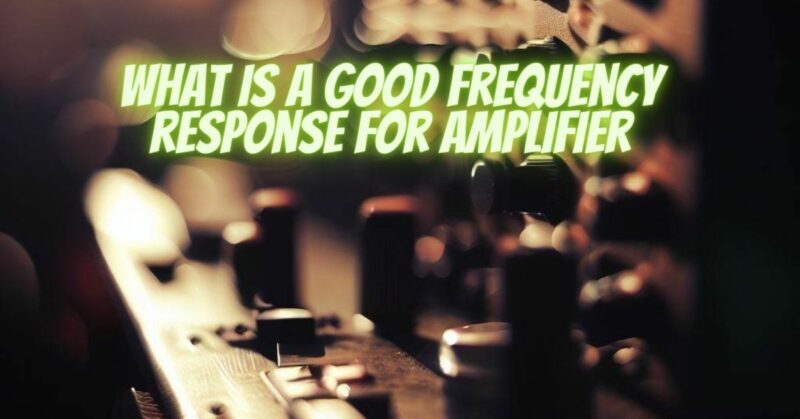When choosing an amplifier, one of the key considerations is its frequency response. A good frequency response ensures that the amplifier can faithfully reproduce audio across the entire audible spectrum, delivering a balanced and accurate sound. In this article, we will explore what constitutes a good frequency response for an amplifier, its significance in audio reproduction, and how it contributes to an optimal listening experience.
Understanding Frequency Response in Amplifiers
Frequency response in an amplifier refers to how it handles different frequencies within the audible range. The audible spectrum spans from approximately 20 Hz (low bass) to 20 kHz (high treble), encompassing the range of sounds perceivable by the human ear. A good frequency response means that the amplifier can faithfully reproduce all frequencies within this range without emphasizing or attenuating specific frequency bands.
The Ideal Frequency Response
- Flat and Even Response: An ideal frequency response for an amplifier is flat and even. This means that the amplifier reproduces all frequencies with equal clarity and volume, without favoring any particular range. A flat response ensures that all instruments and vocals in the audio signal are accurately represented, creating a balanced and natural sound.
- Wide Frequency Range: A good amplifier should have a wide frequency range that covers the entire audible spectrum. This ensures that no frequencies are cut off or compromised, allowing listeners to hear all the nuances and details in the music.
- Minimal Distortion: A good frequency response is also characterized by minimal distortion. Distortion can alter the original audio signal, resulting in a less accurate sound reproduction. A clean and undistorted frequency response preserves the integrity of the audio and provides a more enjoyable listening experience.
Importance of Balanced Frequency Response
- Accurate Sound Reproduction: A good frequency response in an amplifier is essential for accurate sound reproduction. It ensures that the audio signal is faithfully represented, allowing listeners to hear the music as intended by the artist or producer.
- Natural Tonal Balance: With a balanced frequency response, the tonal balance of the music remains true to its original recording. This means that bass, midrange, and treble frequencies are reproduced in proper proportion, creating a cohesive and pleasing sound.
- Transparent Amplification: Amplifiers with a good frequency response act as transparent conduits, faithfully amplifying the audio signal without adding coloration or altering the sound.
- Consistent Audio Experience: A balanced frequency response provides a consistent audio experience across different genres of music and audio content. It ensures that the amplifier performs well with various audio sources, delivering a reliable and enjoyable listening experience.
A good frequency response for an amplifier is characterized by a flat and even response across the entire audible spectrum, minimal distortion, and a wide frequency range. It is essential for accurate sound reproduction, natural tonal balance, transparent amplification, and a consistent audio experience. When selecting an amplifier, paying attention to its frequency response will help you ensure that it delivers a balanced and accurate sound that enhances your listening pleasure and appreciation of music and audio content.


